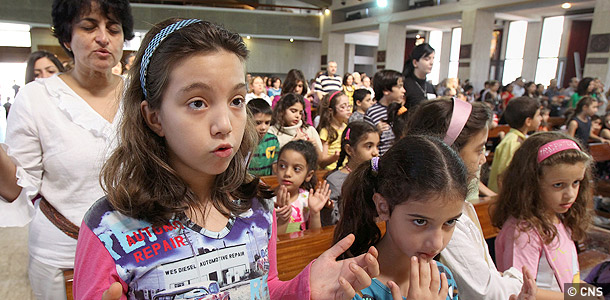Lost in Translation?
Alicia Ambrosio
Friday, October 28, 2011

I grew up in a trilingual household. My mother spoke to me in Spanish, my father spoke to me in Italian, and I spoke to them in English. This made for some interesting scenes when I was talking to my monolingual school friends. Often I would use words in English that didn’t quite make sense in the context of the conversation. It wasn’t because I had a poor grasp of English -- in fact, I was a voracious reader -- but usually it was because there was a word in one of my other two languages that better expressed the idea I was trying to communicate and I would simply translate that word into English. The problem was the connotation usually wasn’t the same in English as it was in Spanish or Italian. It was only in my late teens and early adult years that I finally understood that the best translation was one that communicated the same idea or concept as the original statement and carried the same connotation as the original idea.
This is not unlike the challenge presented when the Church translated the Roman Missal into various languages after the Second Vatican Council. In the case of the English translation, words and phrases were used that made sense to English speakers, but perhaps didn’t fully express the concept or message as in the Latin version.
Fr. Geoff Kerslake of the Archdiocese of Ottawa explains it like this:
The Church's liturgy is constantly adapting to present our faith and spiritual practices more authentically as our culture continues to change. These adaptations reflect the timeless truths of our faith and our liturgical heritage while remaining true to the language, faith and liturgy of the Roman Catholic Church. The current form of the Mass that we celebrate in English has remained unchanged since it was first implemented over 30 years ago. With the lessons we learned since its implementation, and paying attention to the best translation practices available to us today, we have a new opportunity to express what the Church believes. The New Missal uses language which is not only closer to the original prayers (many of which are over 1,000 years old) but also reflects a more formal or dignified way of addressing Almighty God. The New Missal also includes changes made to the Calendar of Saints with the addition of many new saints, including our Canadian St. Brother André! We do not often think of it, but there is indeed a “Roman” Catholic way of praying. With a distinctive liturgical style that is true to our heritage and our way of worshiping God going back close to two thousand years, the New Missal will be an opportunity for all of us to encounter the Roman Catholic Mass again for the first time. Courtesy of the Archdiocese of OttawaPersonally, I found a new understanding of certain parts of the Mass during my time in Rome, and later in Spain. It was not because I was able to attend Mass in historic churches and Basilicas where saints once tread, but because in Italian and Spanish some of the words and phrases used both by the priest and the congregation are different from what we say in English. That opened my eyes to the original intended meaning of those sections. For instance, I was struck dumb the first time I heard the Italian phrase, “Signore non sono degno di partecipare a la tua mensa, ma di soltanto una parola ed io saro salvato,” which means “Lord, I am not worthy to participate in your banquet, but say only one word and I shall be saved.” Similarly the first time I heard the Penitential Act in Italian I nearly fell over upon hearing, “Per mia colpa, mia colpa, mia grandissima colpa,” or “Through my fault, my fault, my great fault," and seeing the Italian congregation strike their chests three time while saying those words. In 2000, when John Paul II announced the beginning of work on the new translation, the intent was to bridge the gap between the current English translation and everything it communicates, and the original Latin. While it will be a bit of a shock at first to be hearing and saying something a little different at Mass, it doesn’t have to be. Check back here every week for the next few weeks as we go through some of changes you’ll notice once we beginning using the new translation at the beginning of Advent. Salt + Light has also produced a series of teaching videos about the new translations and the changes it will bring. The DVDs are available through the Canadian Conference of Catholic Bishops' Publications office.
Related Articles:
>>
SUPPORT LABEL
$50
$100
$150
$250
OTHER AMOUNT
DONATE
Receive our newsletters
Stay Connected
Receive our newsletters

Stay Connected












